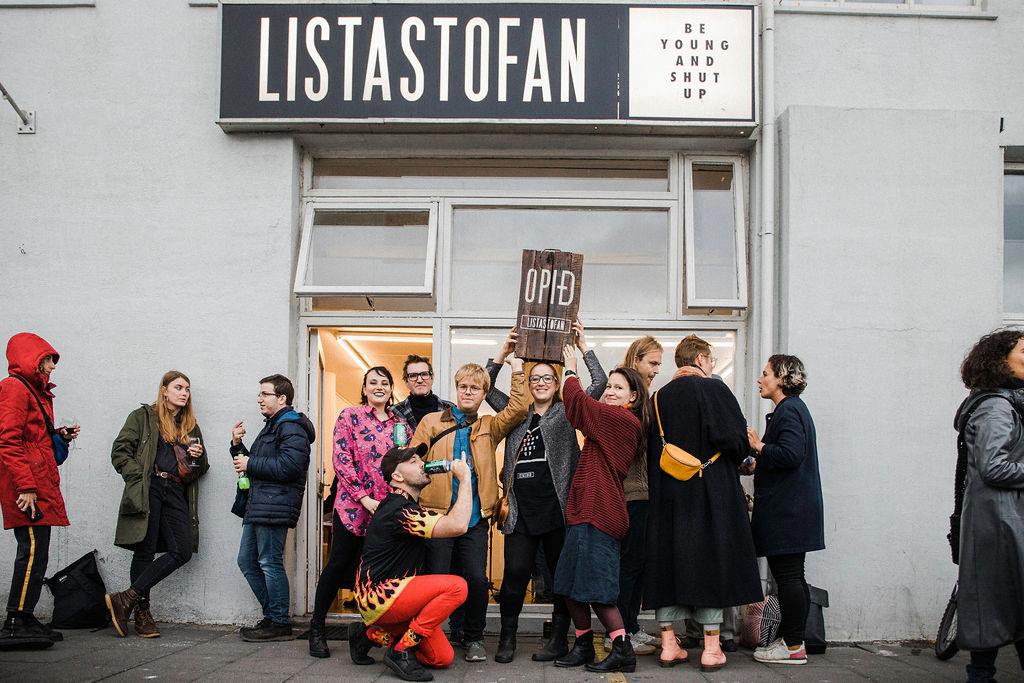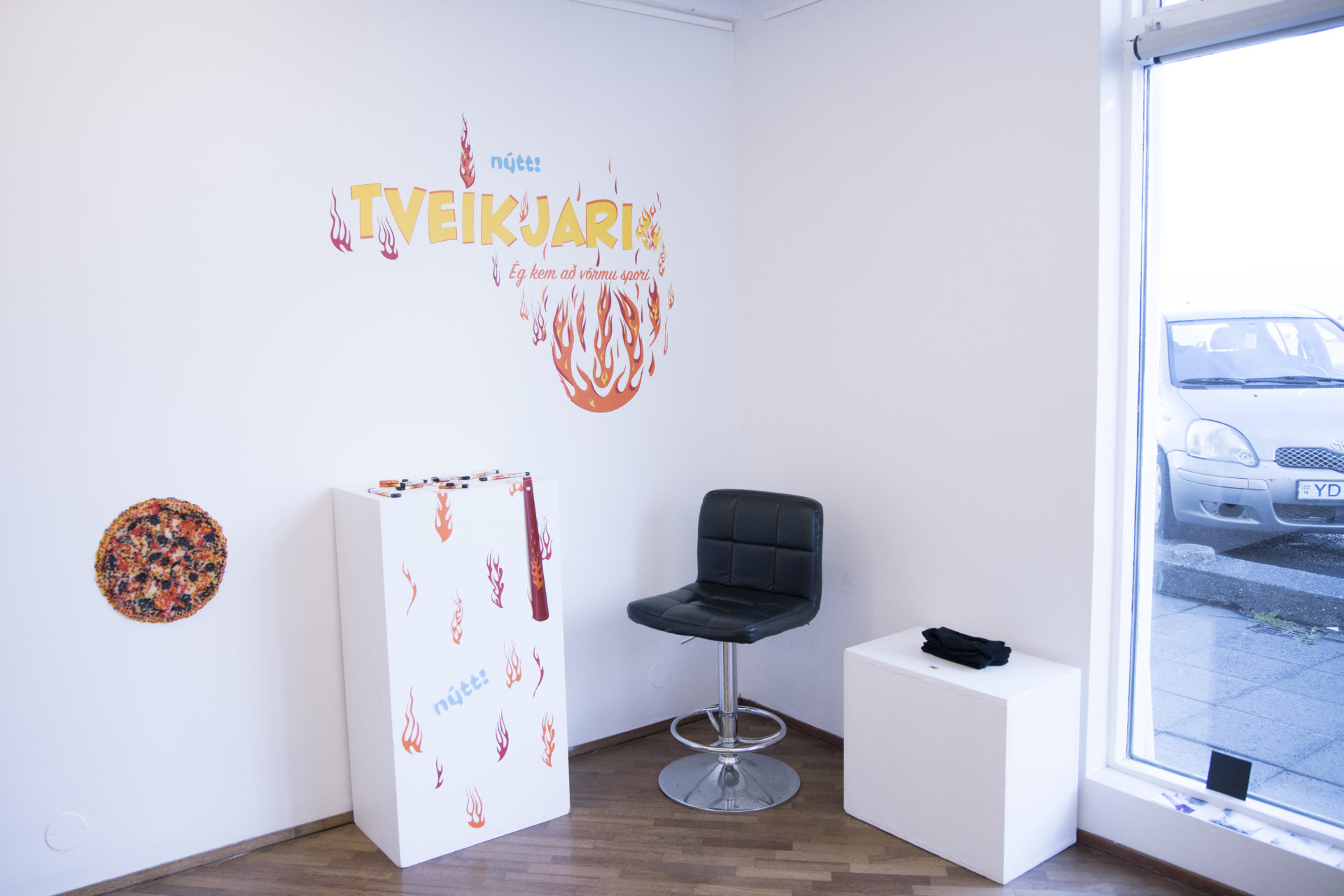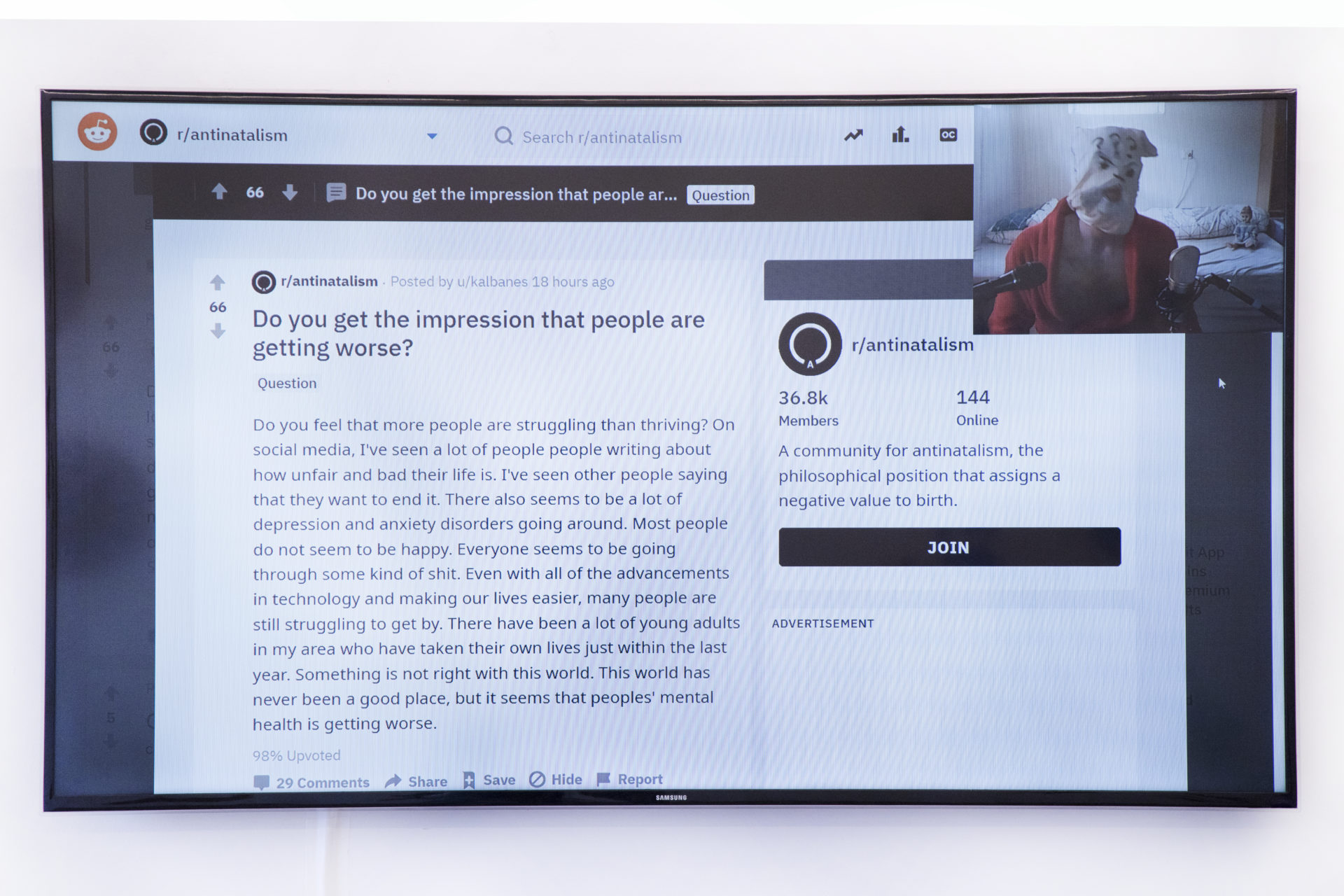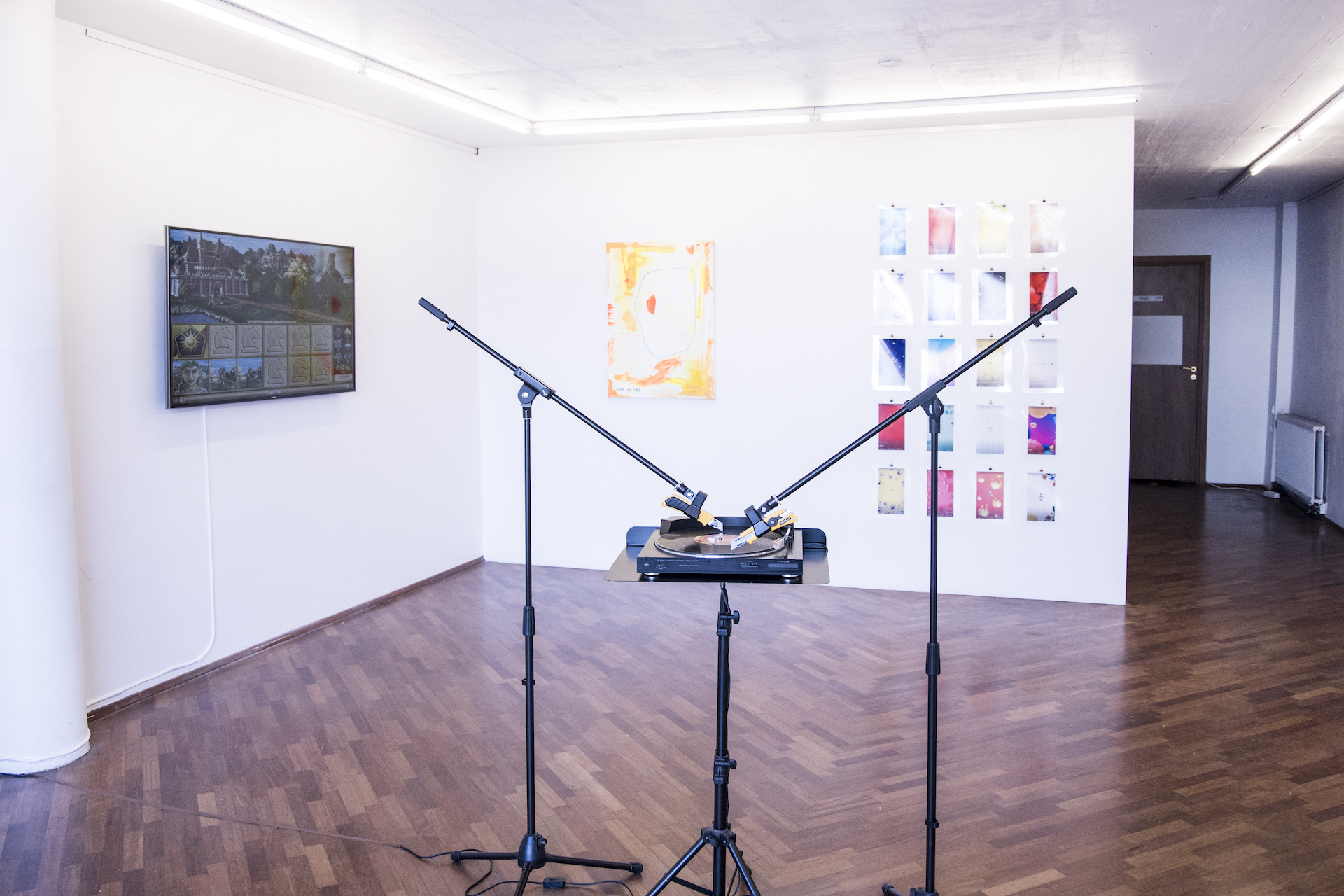
The last exhibition at Listastofan: a conversation with founder Martyna Daniel

The last exhibition at Listastofan: a conversation with founder Martyna Daniel
I had a chat with the founder and director of the artist-run space Listastofan, Martyna Daniel. We talked about the closure of Listastofan, and looked back at its history, its accomplishments and its last exhibition WE RUINED EVERYTHING.
Listastofan has been active since 2015, it hosted 63 shows plus a number of workshops, reading and all kind of art events, and has offered studios to local and international artists. It sounds like Listastofan has accomplished a lot during its four years of activity. Why is it closing?
Indeed, we hosted so many! Actually, yesterday I went back and checked in more details and on top of the 63 exhibitions we also hosted 40 life drawing sessions, many reading nights, concerts, workshops, artist talks, screenings and the total of events in four years is 167! I had not realised there were so many.
The reason why I have decided not to renew the lease is that Listastofan started as a small scale project that was supposed to be a volunteer position next to my creative work and it soon became so busy that I had to postpone all or nearly all personal projects. I feel like it is time to move on to new things and I believe it is nicer to end a project on a high note to keep good feelings from the experience. I did not want the project to become tired and lose interest. For the last exhibition WE RUINED EVERYTHING, Claire Paugam and I worked with 6 other Iceland based artists, each of them has a humorous take on the theme of destruction. The exhibition features works by Logi Leo Gunnarsson, Anne Rombach, Þröstur Valgardsson, Sean Patrick O’Brien, Martyna Daniel, Serge Comte, Claire Paugam and Drengurinn fengurinn. Claire Paugam and I worked as curators on this last exhibition that I consider our actual goodbye statement. It is a loud scream for attention, an arrogant show, a cultural mix and very true to what Listastofan always stood by. With this last exhibition we want people to see the lightness in this closing and that walls are just walls. We now form a community of artists that are free to take on any new projects and that is powerful.
Could you tell me something about your background? Where are you originally from? When did you move to Iceland?
I was born and raised in Geneva, Switzerland but my family is one big cultural mix. My mother is polish and my father was born in New York from South American parents so we always had many languages at home growing up. Surrounded by people of different cultures, nationalities and speaking several languages all my life, it felt natural to create an international artist run space in Reykjavik.
My dad is a musician and my mom teaches flower arrangements so vivid colours, music and art were a huge part of my upbringing. I always felt like a painter and decided to study cinematography to get a new perspective on colours and explore other ways to tell stories. I studied filmmaking in Prague and graduated with a specialisation in cinematography in 2012. Today I work as a cinematographer on freelance projects and I paint from home any chance I get. I moved to Iceland after I graduated from film school so about 5 and a half years ago.
 Sean Patrick O’Brien, Tveikjari (Ég kem að vörmu spori). Photo Credit: Claire Paugam
Sean Patrick O’Brien, Tveikjari (Ég kem að vörmu spori). Photo Credit: Claire Paugam
 Installation view: Fix Me, My Mamma Broke Me by Martyna Daniel and Zéroticône by Serge Comte. Photo Credit: Claire Paugam.
Installation view: Fix Me, My Mamma Broke Me by Martyna Daniel and Zéroticône by Serge Comte. Photo Credit: Claire Paugam.
 Remains of Þröstur Valgarðsson’s performance So fucking Symbolic it hurts. Photo Credit: Claire Paugam.
Remains of Þröstur Valgarðsson’s performance So fucking Symbolic it hurts. Photo Credit: Claire Paugam.
How was it to establish an exhibition space in Reykjavik as a foreigner? How was it to engage the Icelandic art community in Listastofan’s activities?
It did not feel particularly difficult to establish the space as foreigners. In fact we used to joke that it felt easier than to integrate the existing art scene as a foreigner who did not study here. All the obstacles we had were things we could fix or deal with ourselves. We did not rely on anybody’s approval to move forward and that felt refreshing as young artists. Having an Icelandic name made perfect sense to us because we never wanted to be a foreign space in Iceland. We welcomed Icelanders and foreigners alike. We wanted to engage with the Icelandic community from the very beginning and our second exhibition was a group show of three Icelandic artists. Most exhibitions we had were from artists based in Iceland, both Icelandic and foreign.
Looking back at Listastofan program, are you happy with what you have accomplished? Is there anything you are particularly proud of? And something which didn’t go as you wanted?
I am happy with the work we have accomplished. I am particularly proud of the diverse program, the inclusive ideology and the fact that we remained a space true to its roots over the past four years. We have always had a genuine interest in people’s work and since we have been running as a non-profit and all on a volunteer basis, we have managed to keep things very detached from the financial reality of art galleries. This was a real luxury and a fact that allowed us to exhibit whoever we wanted without ever taking sales, reputation or background into consideration.
We never got a chance to be disappointed because we never really had an objective that could be missed. Things happened organically and spontaneously.
Since Listastofan was a non-profit exhibition space, how did you fund the several activities that Listastofan was carrying out?
We covered our rental and utility costs by renting desk space to artists and in some rare cases by charging an entrance fee to specific workshops or events other than exhibitions. We also received a grant from Reykjavik City two years in a row and that helped us renovate and improve our exhibition space and artist studio with new walls, lights and desk spaces. Two years ago we also did a successful Karolina Fund campaign where we raised money to sponsor all exhibitions for one year. Since all of our work was always volunteer we only needed money for rent, utilities and some rare things we needed to buy. Most of the things we have in the space were either donated or lent to us or bought second hand for very little money. Most of the work we did in the space we did ourselves to avoid extra costs as well.
 Drengurinn fengurinn, Hvenær fær maður að vera í friði?. Photo Credit: Claire Paugam.
Drengurinn fengurinn, Hvenær fær maður að vera í friði?. Photo Credit: Claire Paugam.
 Installation view: Cut-Off Blade Looper by Logi Leó Gunnarsson, Hvenær fær maður að vera í friði? by Drengurinn fengurinn, Fix Me, My Mamma Broke Me by Martyna Daniel and Zéroticône by Serge Comte. Photo Credit: Claire Paugam.
Installation view: Cut-Off Blade Looper by Logi Leó Gunnarsson, Hvenær fær maður að vera í friði? by Drengurinn fengurinn, Fix Me, My Mamma Broke Me by Martyna Daniel and Zéroticône by Serge Comte. Photo Credit: Claire Paugam.
 Installation view: Insects by Claire Paugam and Pizza Tonton by Serge Comte. Photo Credit: Claire Paugam.
Installation view: Insects by Claire Paugam and Pizza Tonton by Serge Comte. Photo Credit: Claire Paugam.
What was the role of Listastofan in the art scene in Reykjavik? And which exhibition space or institution is going to fill the gap left by its closure?
To be honest we never really planned to be a gallery. We started as an independent artist studio that morphed into a workshop and exhibition space but it still remained a place of work for 8-14 people every month so the exhibition space was only one side of it. Perhaps looking back I could say it is a space that enabled creativity, a platform for young artists that always felt welcome to work and show what they are working on. It created a wonderful community of artists some of which still work together today.
I don’t think there is a need to fill the hole, projects and places come and go, people stay longer and the community that was born from Listastofan is still alive and well. All those artists will keep creating and sharing their work in new walls and that makes me happy.
When you started Listastofan, what was the plan for the future? Was it supposed to be a long-term project? Which were your goals?
When we started it in 2015 our goal was to create affordable studio and exhibition space for young artists and have a co-working space that would enable people to create and show what they do. Our goals were simple and clear and I believe we stood by that for the four years we were open. We did not know how long the project would be but we certainly intended for it to be long term and not just a short side project: we dedicated a big part of our free time, love and energy to the life of the space.
In your opinion, has the local art scene changed during the last years? And how did you adapt to its changes?
It feels like the independent art scene got louder in recent years and I saw more independent art spaces opening up which is a great addition to the cultural diversity of Reykjavik. As Listastofan evolved in a very organic way it never felt like we had to adapt to a structure or be influenced by a trend.
Ana Victoria Bruno
Featured Image: group photo by Julie Rowland.
